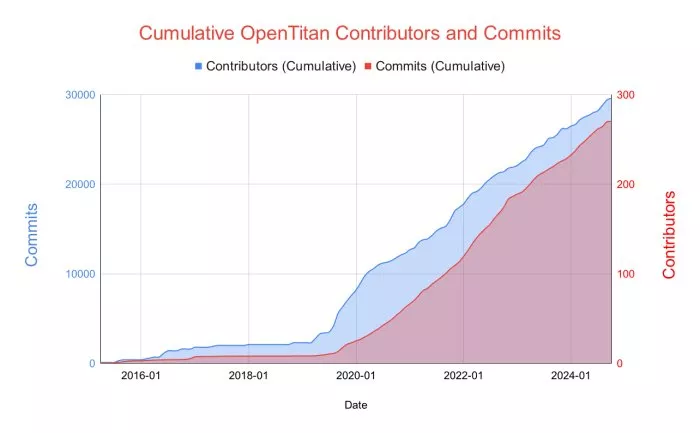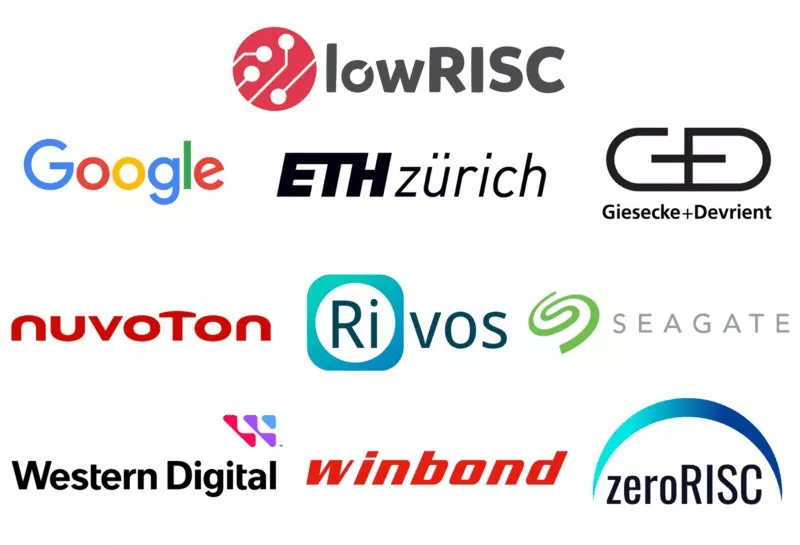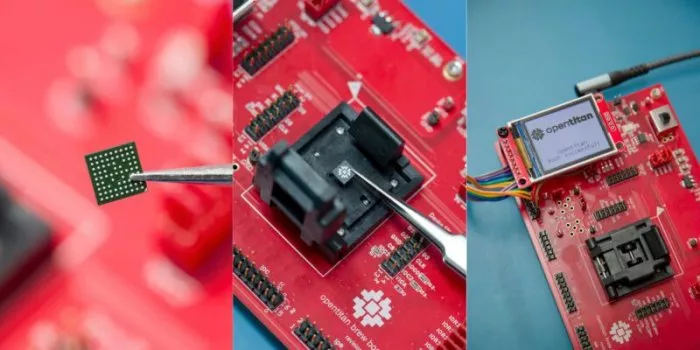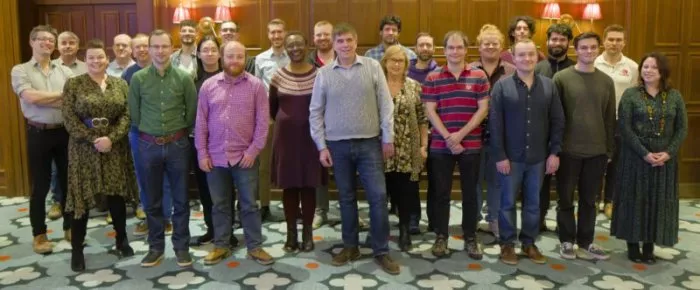lowRISC: A Decade of Bringing Open Silicon to Reality
November 9, 2024 -- lowRISC® is delighted to be celebrating our 10th anniversary as a non-profit open silicon engineering organization — and would like to take this opportunity to salute the fantastic community of partners, contributors, and staff who helped make this past decade so successful. Without this amazing and collaborative ecosystem, none of our collective achievements would have been possible. Thank You!
We’re the steward and maintainer of the OpenTitan® and Ibex® projects, and a founding member of both RISC-V International and the CHERI Alliance. Our mission from the outset has been, and continues to be, to help create commercially relevant, open source silicon designs that are widely adopted throughout industry.
Here are some highlights of what we have achieved together with our partners over the past decade:
- OpenTitan became not only the world’s first open source silicon root-of-trust (RoT) design, but also the first to reach commercial availability.
- Earlier this year, Google and Nuvoton announced that this part, based on OpenTitan’s “Earl Grey”, will be the plan of record hardware RoT for Chromebooks.
- OpenTitan has become, by some measure, the world’s most active open source silicon project.
- Datacentre AI chip developer Rivos, who recently secured over $250m in funding, has announced it is incorporating OpenTitan IP directly into its system silicon, using the “Darjeeling” integrated OpenTitan variant.
- Microsoft based its CHERIoT-Ibex design on lowRISC’s commercial-grade Ibex CPU core, extending it with the proven CHERI hardware security extensions.
- Via the UKRI funded open source Sunburst project, lowRISC is making CHERIoT-Ibex widely available to users who wish to exploit this technology in power, area, or cost-constrained applications.

OpenTitan Contributors and Commits
A Solid Foundation for Success
Facilitating these successes is our Silicon Commons methodology, a collaborative engineering approach that we have developed and evolved with our partners and contributors over the past 10 years. The Silicon Commons leverages the best ideas from open source software development of course, but re-imagines these for the much more challenging silicon development environment (where there is a physical supply chain, high costs, long lead times, many fewer skilled engineers etc). It includes not only design guidelines, training, and documentation, but also rigorous governance processes and infrastructure elements such as CI (continuous integration) and regression testing frameworks.
The Silicon Commons enables the creation of reusable, high-quality silicon IP by our diverse coalition of corporate and academic partners. Because OpenTitan’s reusable, robust, known-provenance IP components can be straightforwardly reconfigured for different targets, its SoC-integrated root of trust working group has made rapid progress using this building-blocks approach, with the first public release of “Darjeeling” in Nov 2023 and continuing under active development.
As a further illustration of the openness of our collaborative engineering model, Caliptra, another open source Root of Trust project with wide industry adoption, has incorporated a considerable amount of OpenTitan’s IP into its design. We welcome this as it demonstrates the strength of sharing silicon designs for the common good and ultimately benefits all end users.
Now let’s take a brief look in a bit more depth at three of the projects mentioned earlier: OpenTitan, Ibex, and Sunburst.
Our flagship open silicon project is OpenTitan, the world’s first open source silicon root of trust and the world’s most active open source silicon project. lowRISC hosts the project, which has been developed in collaboration with ETH Zürich, Giesecke+Devrient, Google, Nuvoton, Rivos, Seagate, Western Digital, Winbond, and zeroRISC.

OpenTitan Partners
While OpenTitan’s vendor- and platform-agnostic capabilities make it directly applicable to servers, network cards, consumer routers, and operational technology devices, it is also ideal for IoT devices and can be designed into hardware at the chipset level.
The OpenTitan project has three foundational pillars – quality, flexibility, and transparency. The first, quality, we demonstrate through our commitment to documentation, review, and perhaps most importantly, design verification (DV).
The second is flexibility. OpenTitan is not just one design, but an ecosystem of high-quality “building blocks” that can and have been composed into different top levels (such as the “Earl Grey” and “Darjeeling” variants mentioned above)
And the third is transparency. We’re firm believers in Kirchoffs’ principle — that the only thing you should need to keep secret in a well designed cryptographic system is the secret key material — but of course there’s more to it than that. OpenTitan’s rigorous governance processes ensure that all developed IP has gone through extensive review and analysis, with known provenance and auditability built in.

OpenTitan, the world’s first open-source silicon root-of-trust
Ibex & Sunburst
OpenTitan’s CPU core, the Ibex RISC-V microcontroller, is an important project in its own right, featuring in multiple successful tape outs since its release in 2018. Ibex, originally developed by ETH Zürich as zero-riscy, has been performance-improved, hardened and verified by lowRISC and its partners, and is ideally suited for embedded control applications. It has been subject to extensive DV (including formal approaches), and is used in many other projects besides OpenTitan — including the UKRI/DSbD-funded Sunburst Project and CHERIoT-Ibex, where Microsoft partnered with lowRISC to help bring this security-enhanced core to production grade.
Open Silicon Everywhere!
Silicon design is much more time-consuming and expensive than software, because — in addition to the physical supply chain and high costs of production — the inability to ‘release early and release often’ places a much higher emphasis on getting the design right the first time. However, the good news is that via an appropriately managed open-source approach — such as we and our partners have used on OpenTitan and elsewhere — these costs can be amortized and so dramatically reduced for participating organizations.
As proven by OpenTitan’s successful journey to production, our Silicon Commons methodology provides a viable pathway to commercial silicon, enabling companies to get better, more secure products to market faster and more efficiently than before. Done correctly, open silicon designs avoid costly “re-invention of wheels,” and allow scarce development resources to be focussed on true USPs, while also providing complete systems for our partners in academia to leverage as the basis for research. It’s a true virtuous circle, with strong economic benefits for all participants, and one which we believe heralds a significant market transformation for our industry.
As we look ahead, we’d like to take an opportunity to thank our amazing partners and contributors, and of course our staff — these successes couldn’t have happened without you!

The lowRISC team
To learn more about our open source engineering projects, or see currently open roles, visit us here. Our first 10 years have seen open source silicon become a reality — we look forward to the next decade when it attains ubiquity!
Related Semiconductor IP
- HBM4 PHY IP
- Ultra-Low-Power LPDDR3/LPDDR2/DDR3L Combo Subsystem
- MIPI D-PHY and FPD-Link (LVDS) Combinational Transmitter for TSMC 22nm ULP
- HBM4 Controller IP
- IPSEC AES-256-GCM (Standalone IPsec)
Related News
- Silicon Creations Awarded TSMC's 2024 Open Innovation Platform Partner of the Year for Mixed Signal IP
- The world’s first open source security chip hits production with Google
- Altium takes "Low-RISC" approach to 32-bit system development on FPGAs
- lowRISC Expands and Appoints New Members to the Board of Directors from Google and ETH Zurich
Latest News
- AI Directs UFS Advancement
- Qualitas Semiconductor Expands Automotive Momentum with 5nm IP Bundle Agreement
- Cyient Semiconductors Acquires Majority Stake in Kinetic Technologies to Drive Custom Power IC Leadership for Edge AI and High-Performance Compute Markets
- Rivian Unveils Custom Silicon, Next-Gen Autonomy Platform, and Deep AI Integration
- NanoXplore raises €20 million from MBDA and Bpifrance to accelerate its diversification into defense and its growth in support of European strategic sovereignty
